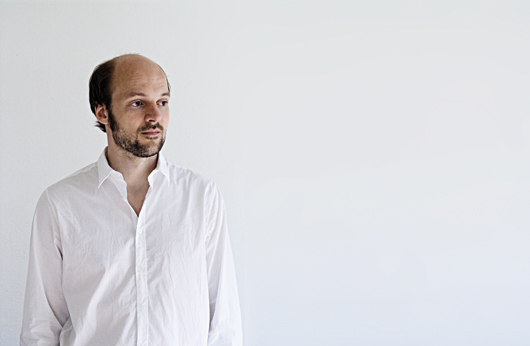In the Studio: Isolée—Six years after ‘We Are Monster,’ Rajko Müller returns to the fray
Rajko Müller, known to the world as pioneering microhouse producer Isolée, might not be the […]

Rajko Müller, known to the world as pioneering microhouse producer Isolée, might not be the most prolific of electronic music’s giants. His last full-length was 2005’s We Are Monster, and his last major single came out in 2009, but his sound is so rich and so much his own that any wait between releases is certain to be worth it. Well Spent Youth, his third full-length, out now on DJ Koze‘s Pampa Records, continues along the path that Müller is known for, as it brims with lush melodies and dense aural textures while maintaining an intense attention to the smallest sonic gestures. We caught Müller in his home in Hamburg to discuss the record’s process.
XLR8R: What are some of the more important pieces of equipment in your studio at the moment?
Rajko Müller: It’s mostly just a couple of synthesizers, as I don’t use much software. One of my more recent acquisitions is the Pro One by Sequential Circuits. I also have been using my Yamaha VSS-30 and my Roland JX-3P quite a bit. I have a few more, but what I really like to use are some older effects like spring reverbs and analog delays. Definitely, the most important aspect of the studio is the computer. I record on Ableton right now, and consider it a tool like any other piece of gear, where you have lots of simple solutions to make creating a track as easy and quick as possible. Speakers are obviously important, and some of the most difficult studio components to find and set up properly. Right now, I have two sets: my smaller system are Klein & Hummel PAS 100s, and my bigger system is from this German company called G.J. Acoustics. Also, I use a Soundcraft 6000 mixer with 24 channels, which is a good size to have in your home and still feel like you have a proper mixing set-up.
It’s been six years since your last full-length. How has composing and producing tracks changed for you since then?
I think that the major changes happened before We Are Monster, with all the possibilities of the computer with unlimited memory capabilities and so on. Now, you can record and record, and you have the tension that you might never finish something. Before, I would get lost and do more and more versions of things—just let versions pile up. What I was trying to do with Well Spent Youth was come more quickly to a finished track, and try to avoid getting lost in possibilities and options.
Is there any piece of gear that you could single out as being more important than all the others?
There isn’t one piece of equipment that I’m totally dependent on. Sometimes you get lost in all the gear, because really, it’s a passion. I know a lot of people who hardly have any gear and just use the computer, and I think in my case, I would be able to make my music without a lot of the gear I have. I could just use the plug-ins and the computer, and it might sound as good as what I currently do, or… maybe even better, I don’t know [laughs]. But I have a passion for gear. Like, if I have an old analog delay, which is very limited in its possibilities, sometimes it’s more interesting and fun to use this on recordings, because then I know it’s a little history of equipment rather than just a perfect emulator or whatever. I’m not very into the debate between analog versus digital, but I feel like I want to keep the touch of the original piece of gear, that its character should stay intact.
Can you describe the process of coming to the acidy yet lush sound of “Hold On”?
For “Hold On” and most tracks, it’s not that easy to trace back how [it] comes to a certain result, especially when you don’t have a clear aim when you start to work on something. There are a lot of things that happen intuitively—I work on sequences, cut them, filter them, add beats and other sequences. Sometimes I displace them again and so on, and all of a sudden I come to something that makes sense to me.
There seems to be a lighter sound on the newer record, both tonally and emotionally, as compared to your other records, which always sounded as if they came from a more icy clime. Is that something that you intended, or is that just what listeners are hearing?
That is difficult to say, because actually, I don’t know if I really thought about those issues while creating the record. But if that’s what listeners are hearing, then that’s what is there. That’s kind of my opinion, you know—that what the listener hears in the music is what is there. It’s not me who is going to define it. It’s very interesting, this impression that you and others have about the new record, and all I can say is that I’m okay with it.
Well Spent Youth is out now on Pampa.

